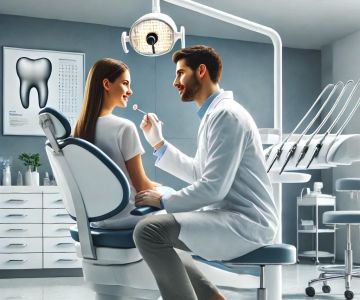1. Understanding Oral Gonorrhea
Oral gonorrhea is a sexually transmitted infection (STI) caused by the bacterium *Neisseria gonorrhoeae*. It is primarily transmitted through oral sexual contact with an infected individual. Like other forms of gonorrhea, oral gonorrhea can lead to serious health complications if left untreated. The infection typically affects the throat, tonsils, and oral mucous membranes, but it can also cause discomfort and symptoms that are easy to overlook.
Oral gonorrhea is a significant concern because it can be asymptomatic in many cases, meaning individuals may not experience noticeable symptoms yet can still spread the infection to others. Understanding how to check for oral gonorrhea and recognizing its symptoms is essential for those who are sexually active, particularly those engaging in oral sex.
2. Symptoms of Oral Gonorrhea
Identifying oral gonorrhea can be tricky, especially when symptoms are mild or absent. However, there are several common signs that can indicate the presence of the infection. If you have engaged in oral sexual contact with someone who may have gonorrhea, it is crucial to monitor your health for any unusual symptoms. Some of the most common symptoms of oral gonorrhea include:
- Sore Throat: A persistent sore throat or pharyngitis is one of the most common symptoms of oral gonorrhea. This can be confused with a typical throat infection like a cold, but it is often more severe and persistent.
- Painful Swallowing: Difficulty or pain while swallowing is another symptom that may be caused by oral gonorrhea.
- White Patches or Sores in the Throat: You may notice white patches or sores in the back of the throat or on the tonsils, which can indicate an infection.
- Redness or Swelling: The throat or tonsils may appear red or swollen, which can also be a sign of infection.
- Unusual Discharge: Although less common, some individuals may experience a discharge from the throat, which can be a sign of gonorrhea.
- Fever: A fever can sometimes accompany oral gonorrhea, indicating that the infection is more severe or widespread.
It is important to note that many individuals with oral gonorrhea may not show any symptoms at all, which is why regular STI screenings are essential, especially for those with multiple sexual partners.
3. How to Check for Oral Gonorrhea
If you suspect you may have oral gonorrhea, it’s essential to get tested. However, diagnosing oral gonorrhea is not something you can do on your own through self-examination. Instead, you’ll need to visit a healthcare provider for proper testing and diagnosis. The most common method for testing oral gonorrhea is through a throat swab.
Here’s what to expect during the testing process:
- Throat Swab: A healthcare provider will use a cotton swab to collect a sample from the back of your throat, near the tonsils, or the area where you may feel irritation or discomfort. This sample is then sent to a laboratory for analysis to check for the presence of *Neisseria gonorrhoeae* bacteria.
- Urine Test: While less common, some healthcare providers may perform a urine test if there’s a possibility of a dual infection in both the oral and genital areas. This test helps identify gonorrhea in other parts of the body.
- Culture Test: In some cases, a culture test may be done to grow bacteria from the sample and confirm the presence of gonorrhea. This method can be used to test for antibiotic resistance as well.
It’s important to inform your healthcare provider about any sexual activity that may have led to your symptoms, including oral sex. This will help them determine the most appropriate testing method for you.
4. Testing for Oral Gonorrhea at Home
While testing for gonorrhea traditionally requires a visit to a healthcare provider, there are now some at-home test kits available that can screen for gonorrhea. These kits typically involve collecting a sample, such as a throat swab or urine sample, and mailing it to a laboratory for analysis. Results can take several days to a week, depending on the testing service.
While these home tests provide more privacy and convenience, they do not replace the need for professional medical consultation. If the result is positive, you should immediately seek treatment from a healthcare professional. If the result is negative but you continue to experience symptoms, a doctor’s visit is still necessary for a thorough evaluation and further testing.
5. Treatment for Oral Gonorrhea
Oral gonorrhea is treatable with antibiotics, and it is important to begin treatment as soon as possible to avoid complications. The most common antibiotic used to treat gonorrhea is ceftriaxone, typically administered as an injection. In some cases, your doctor may prescribe oral antibiotics in addition to the injection, depending on the severity of the infection and other factors like resistance to treatment.
It’s crucial to complete the entire course of antibiotics as prescribed by your healthcare provider, even if you start to feel better before finishing the medication. This ensures that all of the bacteria are eliminated from your system and helps prevent the infection from returning.
Additionally, you should inform any sexual partners that you have been diagnosed with gonorrhea so they can also seek treatment and avoid spreading the infection. It’s also important to avoid sexual activity until your treatment is complete and your healthcare provider confirms that the infection has been cured.
6. Preventing Oral Gonorrhea
The best way to prevent oral gonorrhea is to practice safe sex, including using condoms or dental dams during oral sex. This reduces the risk of transmission of not only gonorrhea but also other sexually transmitted infections (STIs). Regular testing for STIs, especially if you have multiple sexual partners, can help catch infections early and prevent long-term health complications.
If you or your partner have been diagnosed with gonorrhea, it is essential to follow the treatment regimen prescribed by your doctor and avoid sexual contact until the infection is cleared. Maintaining open communication with sexual partners and regularly practicing safe sex are key components of a healthy sexual lifestyle.
7. Conclusion: Seeking Medical Advice and Care
If you suspect you may have oral gonorrhea, the most important step is to get tested by a healthcare professional. Early diagnosis and treatment are crucial to preventing complications and the spread of the infection to others. Regular screenings, especially for sexually active individuals, can help ensure that any STIs, including oral gonorrhea, are detected early and treated promptly.
In addition, practicing safe sex and maintaining open communication with your sexual partners about health concerns can significantly reduce the risk of contracting or spreading oral gonorrhea. If you are concerned about your sexual health or need guidance on testing and treatment, don’t hesitate to consult a healthcare provider who can offer expert advice and care.





 Westgate Dental Arts
Westgate Dental Arts Coventry Family Dental
Coventry Family Dental Familia Dental
Familia Dental Dr. Daniel S. Fife, DDS
Dr. Daniel S. Fife, DDS Dentistry At Suburban Square: Michael I. Wollock, DMD
Dentistry At Suburban Square: Michael I. Wollock, DMD Comfort Care Dental
Comfort Care Dental The Importance of Oral Health Education During Pregnancy for a Healthy Pregnancy
The Importance of Oral Health Education During Pregnancy for a Healthy Pregnancy Why Skipping Dental Checkups Can Lead to Bigger Oral Health Problems
Why Skipping Dental Checkups Can Lead to Bigger Oral Health Problems Advantages of Porcelain Dental Restorations
Advantages of Porcelain Dental Restorations Best Tips for Brushing Your Teeth Properly for Healthy Gums: Essential Techniques for Oral Health
Best Tips for Brushing Your Teeth Properly for Healthy Gums: Essential Techniques for Oral Health How Can Diabetes Cause Tooth and Gum Problems? Preventing and Managing Oral Health Issues
How Can Diabetes Cause Tooth and Gum Problems? Preventing and Managing Oral Health Issues Healthy Habits for Promoting Good Oral Health and Hygiene: Tips for a Healthy Smile
Healthy Habits for Promoting Good Oral Health and Hygiene: Tips for a Healthy Smile